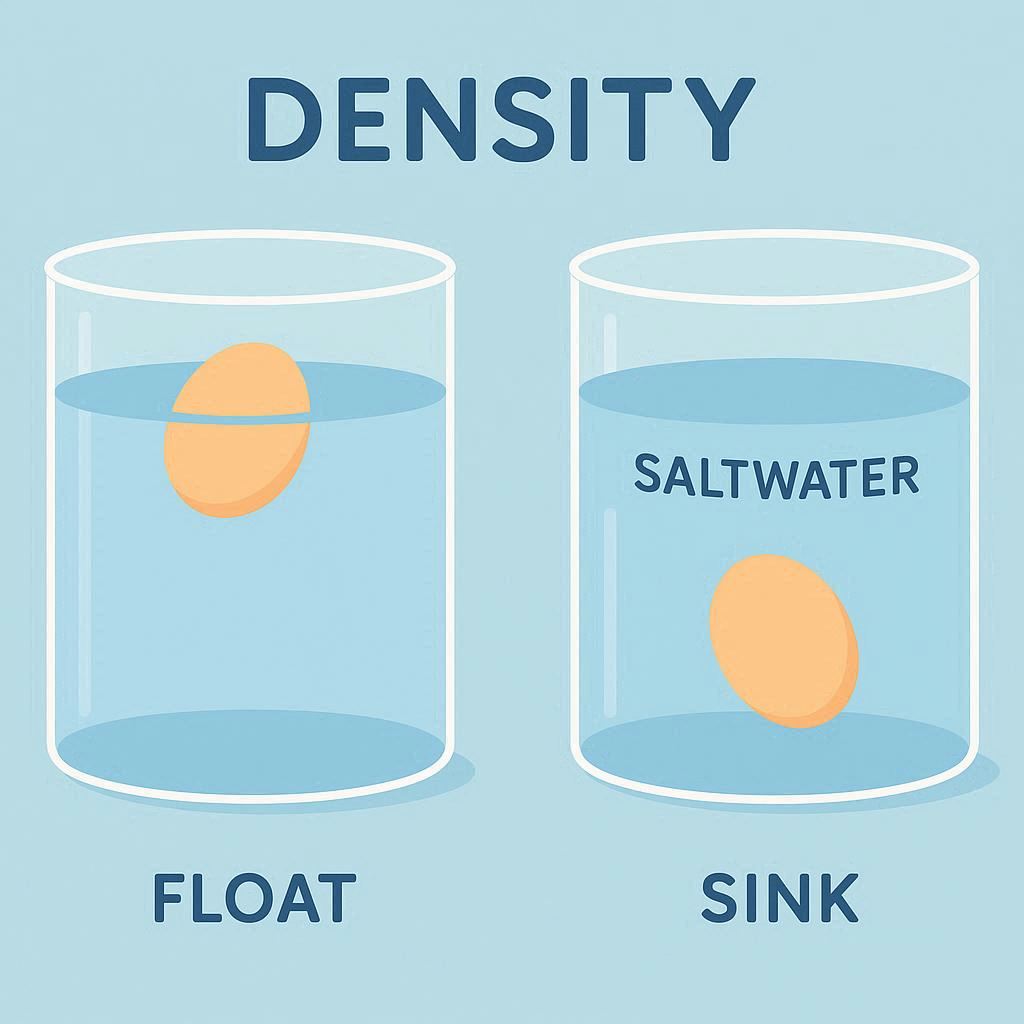Have you ever seen someone place an egg into a bottle and then seemingly defy physics by making it stay inside? If so, you might have been left wondering how such a trick is possible. The ‘egg in a bottle’ mystery is a classic science demonstration that has fascinated many. It’s not just a simple party trick; it’s a great way to illustrate how air pressure works. In this blog post, we’ll explore the science behind this fascinating phenomenon and why air pressure plays such a crucial role.
Understanding the Setup
The ‘egg in a bottle’ trick starts with a clean, dry glass bottle and an egg. The bottle is typically tall enough to hold the egg but narrow enough so that the egg cannot fit through the neck when placed upright. The goal is to get the egg inside the bottle without breaking it or altering the bottle’s shape. The amazing part comes when you place the egg near the bottle’s opening, and with a bit of creativity and science, the egg ends up inside the bottle seemingly on its own.
The Science Behind the Trick
The key to understanding how the egg ends up inside the bottle lies in the concept of air pressure. Air pressure is the force exerted by the weight of air in the atmosphere. At sea level, the atmospheric pressure is about 1013 hPa (hectopascals), which is the result of the weight of the entire atmosphere pressing down on the Earth’s surface. This pressure is constantly acting on everything around us, including the objects in our everyday lives.
When you heat the inside of the bottle, the air inside it expands. This expanded air then rises and escapes through the neck of the bottle. Once the bottle is removed from the heat source, the air inside it begins to cool down, and as it cools, it contracts. This contraction creates a partial vacuum inside the bottle because there’s now less air inside than before. The atmospheric pressure outside the bottle is higher than the pressure inside, and this pressure difference creates a force that pushes the egg into the bottle.
How to Perform the Trick
Now that we’ve covered the science, let’s go through a step-by-step guide on how to perform the ‘egg in a bottle’ trick:
Materials Needed:
- A clean, dry glass bottle with a narrow neck (like an empty beer or soda bottle)
- An egg
- Water
- A heat source (like a hot water bath or a candle)
Step 1: Prepare the Bottle
Start by taking the clean, dry glass bottle and ensuring that it’s free of any obstructions or debris. This is important because even a small piece of paper or a stray hair could prevent the egg from entering the bottle smoothly.
Step 2: Heat the Bottle
Next, heat the inside of the bottle. You can do this by filling a separate container with hot water and submerging the bottle into it, or you can place a candle inside the bottle and let it burn for a few minutes. If you’re using a candle, make sure the flame is small enough not to melt the bottle or cause any damage. Heating the bottle will cause the air inside it to expand and escape through the neck.
Step 3: Cool the Bottle
Once the bottle has been heated for a few minutes, remove it from the heat source. Allow it to cool down slightly, but not completely. It’s important to keep the bottle warm because the temperature gradient is essential for creating the partial vacuum inside.
Step 4: Place the Egg Near the Opening
Now, take the egg and carefully place it near the opening of the bottle. Make sure the egg is aligned with the neck of the bottle and that it’s not touching the edges. This is the part where patience comes into play. You might need to wait a few seconds, but eventually, you should start to see the egg being drawn into the bottle.
Step 5: The Egg Enters the Bottle
As the air inside the bottle continues to cool and contract, the pressure difference between the inside and outside of the bottle becomes greater. This pressure difference creates an upward force on the egg, pushing it into the bottle. It might look like magic, but it’s all thanks to the power of air pressure!
The Role of Air Pressure
As we’ve established, air pressure is the unsung hero of this trick. Without the pressure difference created by the heating and cooling process, the egg wouldn’t budge. Here’s a more detailed explanation of how air pressure works in this context:
-
Heating the Bottle: When you heat the bottle, the air inside it expands and rises, creating a current of air that flows out of the bottle’s neck. This process continues until the air inside the bottle reaches the same temperature as the heat source.
-
Cooling the Bottle: Once you remove the heat source, the air inside the bottle begins to cool down. As it cools, the air molecules contract, reducing the overall volume of air inside the bottle. This contraction creates a partial vacuum because there’s now less air inside the bottle than there was before.
-
Pressure Difference: The atmospheric pressure outside the bottle is much higher than the pressure inside the bottle after it has cooled. This pressure difference creates a force that pushes the egg into the bottle. The egg is forced into the bottle by the higher external pressure, and once it’s inside, the pressure inside the bottle increases slightly, but the egg remains trapped because the neck of the bottle is narrower than the egg itself.
Why the Egg Doesn’t Fall Out
After the egg is inside the bottle, you might wonder why it doesn’t just fall back out. The answer lies in the shape of the egg and the bottle. The egg is wider than the neck of the bottle, so once it’s inside, it can’t easily fall back out. Additionally, the pressure inside the bottle is still lower than the pressure outside, which helps to keep the egg in place.
Interesting Facts About Air Pressure
Now that we’ve delved into the science behind the ‘egg in a bottle’ trick, let’s take a look at some interesting facts about air pressure that will give you a deeper appreciation for this amazing force:
-
Atmospheric Pressure: The Earth’s atmosphere exerts about 1013 hPa (hectopascals) of pressure at sea level. This is equivalent to the weight of about 10 metric tons of air bearing down on every square meter of the Earth’s surface!
-
Pressure at Altitude: As you go higher above sea level, the atmospheric pressure decreases. This is why it’s harder to breathe at high altitudes and why airplanes need pressurized cabins to keep passengers comfortable.
-
Weather and Pressure: Changes in air pressure are responsible for many weather phenomena, including wind, rain, and storms. High pressure systems bring fair weather, while low pressure systems often bring clouds and precipitation.
-
Pressure in the Human Body: Air pressure plays a crucial role in the human body as well. For example, the pressure in your ears helps you maintain balance, and the pressure in your lungs helps you breathe. Even your blood pressure is a result of the force of blood pushing against the walls of your arteries.
Air Pressure in Everyday Life
Air pressure is not just a scientific concept; it’s something that affects our daily lives in many ways. From the way we breathe to the weather we experience, air pressure is always at work. Here are some examples of how air pressure impacts our everyday lives:
-
Breathing: When you inhale, your diaphragm moves downward, increasing the volume of your chest cavity. This reduces the pressure inside your lungs, allowing air to flow in. When you exhale, the process reverses, and air flows out of your lungs.
-
Weather: As mentioned earlier, air pressure plays a key role in determining the weather. By monitoring changes in air pressure, meteorologists can predict changes in the weather and warn us about potential storms or other severe weather events.
-
Tire Pressure: The tires on your car rely on air pressure to function properly. The correct tire pressure ensures better fuel efficiency, improved handling, and increased safety on the road. Underinflated tires can lead to reduced traction, increased wear and tear, and even blowouts.
-
Water Pumps: Air pressure is also used in water pumps to force water out of a well or reservoir. By creating a partial vacuum, the pressure of the surrounding air pushes the water up through the pump and into the piping system.
Common Questions and Troubleshooting
If you’re having trouble getting the egg into the bottle, there might be a few reasons why it’s not working. Here are some common questions and troubleshooting tips to help you succeed:
- Why isn’t the egg going into the bottle?
- Solution: Make sure the bottle is heated properly and that the air inside it has enough time to expand and escape. Also, ensure that the bottle is slightly cooled before placing the egg near the opening. If the bottle is still too hot, the egg could crack due to the heat.
- What if the egg breaks?
- Solution: If the egg breaks, it’s probably because it wasn’t aligned properly with the neck of the bottle or because the bottle was mishandled during the heating process. Try using a larger egg or a smaller bottle to see if that helps. You can also try using a different type of bottle or adjusting the heat source.
- Why does the egg stay in the bottle?
- Solution: The egg stays in the bottle because the pressure inside the bottle is lower than the pressure outside. Additionally, the shape of the egg and the bottle prevent the egg from easily falling back out.
Conclusion
The ‘egg in a bottle’ mystery is a fun and educational way to demonstrate the power of air pressure. By heating the bottle, creating a partial vacuum, and allowing the atmospheric pressure to push the egg inside, you can perform a trick that will amaze your friends and family. This simple demonstration also serves as a great reminder of how air pressure works and how it affects our daily lives.
Next time you see someone perform this trick, remember the science behind it. Air pressure is an incredible force that’s always at work, even in the simplest of scenarios. So, the next time you encounter a situation where you need to understand air pressure, you can draw on this fun and engaging example to help you grasp the concept.
If you’ve enjoyed this post and want to try more fun science experiments at home, be sure to check out our other articles where we explore more fascinating scientific principles and how they work in everyday life. Happy experimenting!



